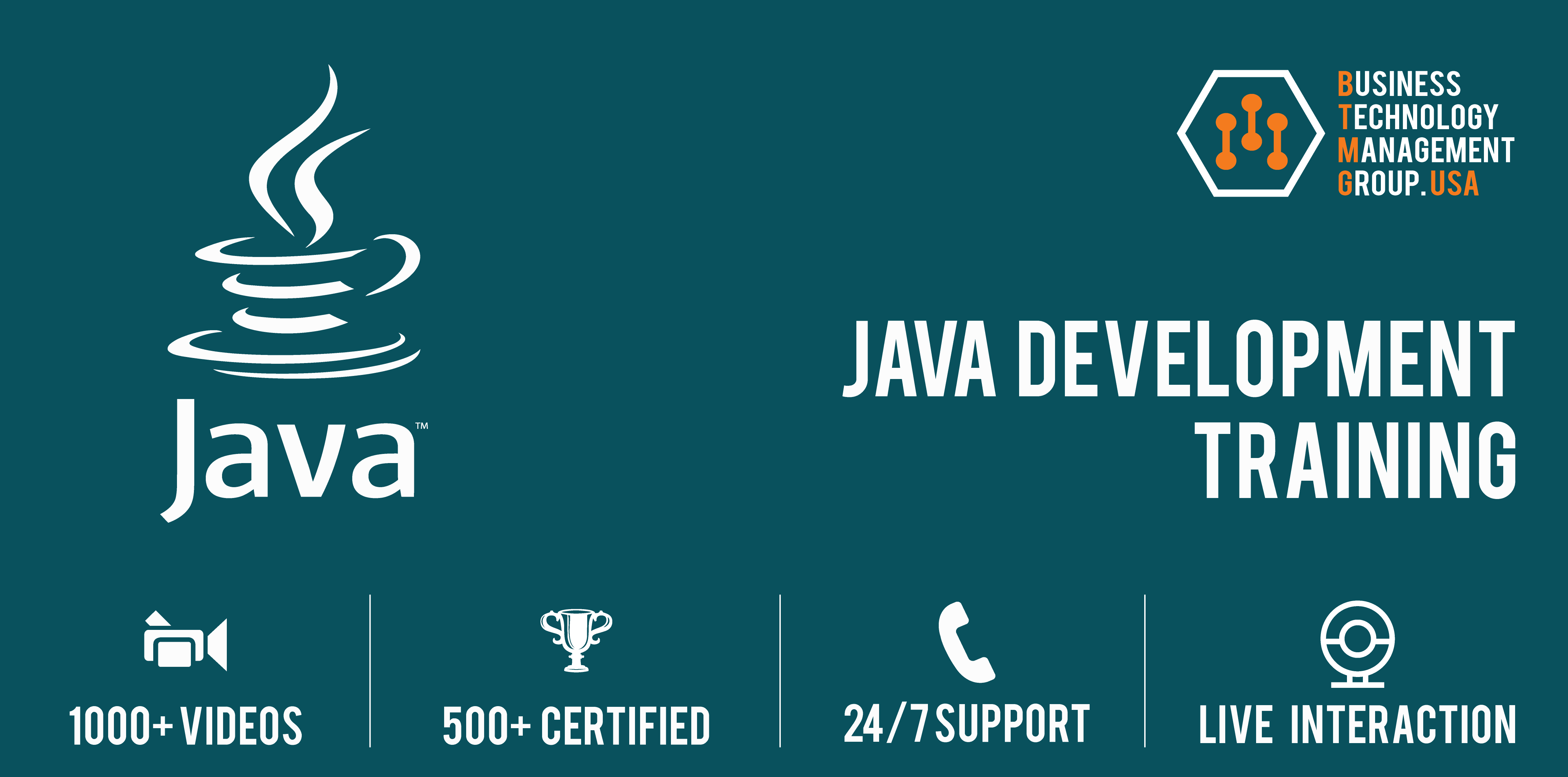Java Training Course
- Home
- Java Training Course

- Duration: 45 days
- Support: 24x7
- Online Video: Yes
- Certification Preparation: Yes
- Group Discounts: Available
Java Course Introduction
Like any programming language, the Java language has its own structure, syntax rules, and programming paradigm. The Java language’s programming paradigm is based on the concept of OOP, which the language’s features support.
The Java language is a C-language derivative, so its syntax rules look much like C’s. For example, code blocks are modularized into methods and delimited by braces ({ and }), and variables are declared before they are used.
Structurally, the Java language starts with packages. A package is the Java language’s namespace mechanism. Within packages are classes, and within classes are methods, variables, constants, and more. You learn about the parts of the Java language in this tutorial.
- The Java compiler
When you program for the Java platform, you write source code in .java files and then compile them. The compiler checks your code against the language’s syntax rules, then writes outbytecode in .class files. Bytecode is a set of instructions targeted to run on a Java virtual machine (JVM). In adding this level of abstraction, the Java compiler differs from other language compilers, which write out instructions suitable for the CPU chipset the program will run on. - The JVM
At runtime, the JVM reads and interprets .class files and executes the program’s instructions on the native hardware platform for which the JVM was written. The JVM interprets the bytecode just as a CPU would interpret assembly-language instructions. The difference is that the JVM is a piece of software written specifically for a particular platform. The JVM is the heart of the Java language’s “write-once, run-anywhere” principle. Your code can run on any chipset for which a suitable JVM implementation is available. JVMs are available for major platforms like Linux and Windows, and subsets of the Java language have been implemented in JVMs for mobile phones and hobbyist chips.
SAP Modules
- ABAP
- ABAP-HR
- Web Dynpro
- CRM Technical
- Workflow
- FICO
- HCM
- CRM
- BASIS
- SAP Securiy
- BI – BO
- HANA
- PI
- MM
- SD
- PP

Support services
We know how hard it can be to find and keep a job when there are so many other things to worry about. Our support team is here to help break down the barriers which are blocking your road to employment.
If you are a Working Chance candidate, please don’t hesitate to ask for advice or support on any issues which are affecting your chances of finding a job.
For further information, please email careers@www.btmgusa.com and our Support and Training Manager will get in touch with you.
Job Preparation
- Assistance with learning job seeking skills.
- Resume creation.
- Master application completion.
- Dressing for success.
- Job interview preparation.
Job Development
- Assistance with completing applications online or in person.
- Job development online, on foot, networking events, job fairs and established employer relationships to locate available positions in your job goal.
- Job leads and information on attending hiring events.
- Follow-ups on applications placed to request interviews.
